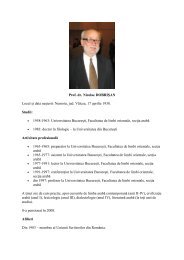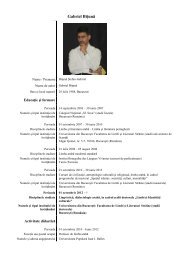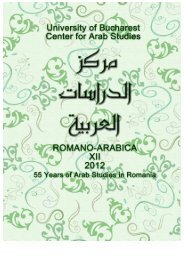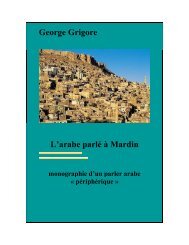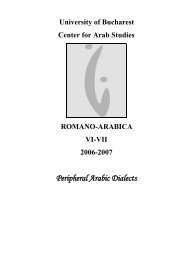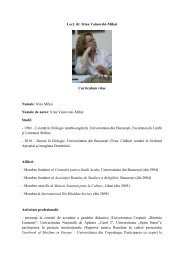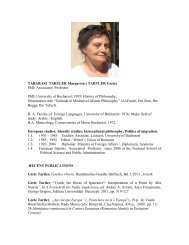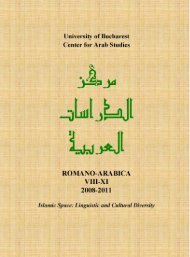Arabic Linguistics
Arabic Linguistics
Arabic Linguistics
Create successful ePaper yourself
Turn your PDF publications into a flip-book with our unique Google optimized e-Paper software.
equires, however, that evidence should be produced that the respective substrate<br />
languages of e.g. JA, N, Sranan and Tok Pisin, all have similar or identical<br />
compounds likely to have served as a model for these pidgins and creoles.<br />
Evidence from JA and N thus shows that greater care needs to be exercized<br />
when attempting to trace back lexicalized compound nouns to the substratal input,<br />
and that identical pidginization strategies may independently yield identical<br />
outcomes across pidgin or creole languages.<br />
8. Conclusions<br />
This paper has attempted to show, on the basis of selected data from JA and<br />
N, that the study of <strong>Arabic</strong>-based pidgins and creoles can bring to light facts and<br />
phenomena of interest first and foremost to pidgin and creole linguistics: the<br />
validity of some diagnostic features suggested in the literature; apparent<br />
grammaticalization and the role of the substratal input and of the ―partial model‖<br />
in the lexifier; the existence of a productive passive formation mechanism; the use<br />
of tone to encode morphosyntactic distinctions; universal pidginization strategies.<br />
Under the circumstances, it is regrettable that textbooks of or introductions<br />
to pidgin and creole studies tend to focus on Atlantic and/or Pacific varieties with<br />
a European lexifier and only infrequently refer to and include data from <strong>Arabic</strong>based<br />
pidgins and/or creoles 16 .<br />
Finally, at least some of the phenomena discussed above, namely the<br />
apparent grammaticalization of a verbum dicendi into a complementizer and the<br />
formation of passives by changing tonal marking on active transitive verbs, should<br />
be of interest to grammaticalization studies and respectively general linguistic<br />
typology as well.<br />
Notes<br />
1. See e.g. Nhial 1975, Owens (1985, 1989, 1990, 1991, 1997, 2001: 260-261), Miller (1993,<br />
2002), Kaye and Tosco (1993), Avram (1994, 1995) and Wellens (2003). Differences between the two<br />
varieties of N (from Kenya and from Uganda respectively) are mostly ignored in this article.<br />
2. See e.g. Nhial 1975, Prokosch (1986), Vincent (1986), Miller (1993, 1994, 2002),<br />
Tosco (1995).<br />
3. For KN cf example (20) in section 2.<br />
4. Note that gal/gále is not the only complementizer. Other complementizers include Ø,<br />
kede and keli (see Miller 2002: 35).<br />
5. A topic marker, according to Pasch and Thelwall (1987: 135).<br />
6. Among the substrate languages belonging to the Bantu family, Luganda is, after<br />
Swahili, the second important source of lexical items in N (Pasch and Thelwall 1987: 140).<br />
7. Cf. also Owens (1990).<br />
37



